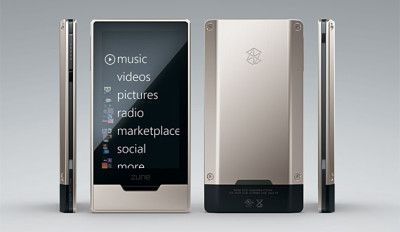From our front-page news:
Last week, I spoke about Microsoft's refusal to sell the Zune HD outside of US. After all, it looks as though it's more than capable of delivering a compelling experience, thanks in part to NVIDIA's Tegra SoC (system-on-a-chip). So, why would they shun the rest of the world? Well, at this point, it's really hard to say, but according to Apple-reporting site AppleInsider, there are five main reasons that the Zune HD is destined to fail, regardless of where it's sold.
The site tears apart the Zune HD's most redeeming features, starting with the OLED technology. While still in its infancy, OLED has some real potential as becoming a killer display choice, but for now, it's far too expensive to implement top-quality OLED displays into affordable products. According to both AppleInsider and other sites, OLED on the Zune HD, as well as other recent consumer products, is either too dark (200cd/m2 compared to ~400cd/m2 on desktop displays), or drains the battery too fast (the details are too technical to tackle here).
The next issue is the fact that NVIDIA's Tegra isn't all it's cracked up to be. To make a long story short, Apple used to use an ARM processor built by PortalPlayer in iPods up to generation 5. Apple dropped them, and brought PA Semi on board. NVIDIA bought PortalPlayer in hopes they could revamp the technology and get back into the iPod. It didn't happen.
So essentially, deep-down, Microsoft is using a CPU core in their Zune HD that was at one time pushed aside by Apple. And to make the odd connections even odder, the GPU core in Apple's current iPods/iPhones is the PowerVR SGX... a derivative of the GPU used in the Sega Dreamcast (a console we wrote about also last week). So this, coupled with the lack of true HD capabilities, is what's apparently going to hurt the Zune HD.
I haven't had the time to do all the fact-checking, but what AppleInsider is reporting on looks to be quite well-researched. I'm still going to hold out for real reviews of the final product though, before forming my own conclusions. Thanks to Don for the heads-up on this news.

In contrast, the modern Cortex-A8 used in the iPhone 3GS, Palm Pre, Nokia N900, and Pandora game console represents the latest generation of ARM CPU cores. It also employs a DDR2 memory interface, erasing a serious performance bottleneck hobbling the Zune HD's Tegra. It's difficult to make fair and direct comparisons between different generations of technology, but NVIDIA's own demonstrations of Tegra's ARM11/integrated graphics show it achieving 35 fps in Quake III. The same software running on Pandora's Coretex-A8 with SGX GPU core achieves 40-60 fps.
Source: AppleInsider
The site tears apart the Zune HD's most redeeming features, starting with the OLED technology. While still in its infancy, OLED has some real potential as becoming a killer display choice, but for now, it's far too expensive to implement top-quality OLED displays into affordable products. According to both AppleInsider and other sites, OLED on the Zune HD, as well as other recent consumer products, is either too dark (200cd/m2 compared to ~400cd/m2 on desktop displays), or drains the battery too fast (the details are too technical to tackle here).
The next issue is the fact that NVIDIA's Tegra isn't all it's cracked up to be. To make a long story short, Apple used to use an ARM processor built by PortalPlayer in iPods up to generation 5. Apple dropped them, and brought PA Semi on board. NVIDIA bought PortalPlayer in hopes they could revamp the technology and get back into the iPod. It didn't happen.
So essentially, deep-down, Microsoft is using a CPU core in their Zune HD that was at one time pushed aside by Apple. And to make the odd connections even odder, the GPU core in Apple's current iPods/iPhones is the PowerVR SGX... a derivative of the GPU used in the Sega Dreamcast (a console we wrote about also last week). So this, coupled with the lack of true HD capabilities, is what's apparently going to hurt the Zune HD.
I haven't had the time to do all the fact-checking, but what AppleInsider is reporting on looks to be quite well-researched. I'm still going to hold out for real reviews of the final product though, before forming my own conclusions. Thanks to Don for the heads-up on this news.

In contrast, the modern Cortex-A8 used in the iPhone 3GS, Palm Pre, Nokia N900, and Pandora game console represents the latest generation of ARM CPU cores. It also employs a DDR2 memory interface, erasing a serious performance bottleneck hobbling the Zune HD's Tegra. It's difficult to make fair and direct comparisons between different generations of technology, but NVIDIA's own demonstrations of Tegra's ARM11/integrated graphics show it achieving 35 fps in Quake III. The same software running on Pandora's Coretex-A8 with SGX GPU core achieves 40-60 fps.
Source: AppleInsider
